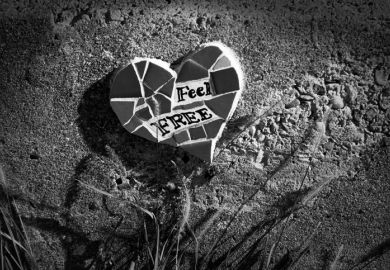Realignment of the Left? is a well-researched and timely study of Liberal-Labour relations. The issue of a rapprochement between the two parties is now firmly on the agenda. This is primarily because of the Blairite "project". Its principal thesis, as expounded by Philip Gould, the party's influential opinion pollster, is that "the fundamental reason" for Conservative hegemony this century is "that the two progressive traditions" represented by Labour and the Liberals split. Reconciling them will "make possible a century of progressive dominance". This book effectively demolishes the historical basis underpinning the thesis. The elusive "progressive alliance" is shown to be a myth.
The myth is sustained by an untenable assumption - that early 20th-century liberalism was imbued with the philosophy of the "New Liberal" thinkers, who held that it was the state's duty to realise the collective will and promote social justice. Peter Joyce demonstrates that the Liberal Party for the most part remained sturdily individualistic in outlook and hesitant about social legislation. The social reforms of the pre-1914 government were guided more by the quest for "national efficiency" than social justice. By the outbreak of war, the mix of huge wealth and mass squalor had been virtually untouched.
The author concludes by querying whether its record in government merited the party the title of "progressive". The Liberal Party was a medley of disparate strands. This became painfully evident in its decline when electoral strategy (or survival) rather than policy became its consuming concern. Given the unrelenting squeeze imposed by the first-past-the-post system, with whom was it to align? During the minority Labour government of 1929-31 the 50-odd band of Liberals would typically split three ways - for, against and abstain. The pen that wrote the 1929 economic policy might have been that of Keynes but the spirit remained Cobden's.
Even when Labour stretched out its hand, it was spurned. With both parties in peril from a khaki election organised by Lloyd George's Conservative-Liberal coalition, Henderson in 1918 suggested a merger between Labour and the Asquith Liberals into a "new democratic party" - but the Liberal leader refused. By virtue of background, ideology and social affiliation many Liberals felt close to the establishment and indeed, in the 1930s, the right-wing of the party merged with the Tories. The only election pacts "independent" Liberals signed were with the Conservatives, not Labour.
Even if one accepts that the party was progressive it does not follow that its voters were. The best test of this was the 1951 election. Bankrupted by the 1950 election, the Liberals could finance candidates in far fewer seats. Where they withdrew their vote went to the Tories in the ratio of 3 to 1. Seventeen seats, it was estimated, were lost by Labour as a result, and the Tories began their 13 years in power.
Indeed, the idea of a "Liberal electorate" is a misnomer. Since its revival in the early 1970s, the prime function of the party has been as a repository of partisan protest - a flight from the two main parties rather than a port of destination.
No less than before, the Liberals face a predicament. With "New Labour" solidly implanted in the middle ground, where do they belong? And if they differentiate themselves from Labour, do they do so from the left rather than the right?
Eric Shaw is senior lecturer in politics, University of Stirling.
Realignment of the Left?: A History of the Relationship between the Liberal Democratic and Labour Parties
Author - Peter Joyce
ISBN - 0 333 68296 3
Publisher - Macmillan
Price - £50.00
Pages - 346
Register to continue
Why register?
- Registration is free and only takes a moment
- Once registered, you can read 3 articles a month
- Sign up for our newsletter
Subscribe
Or subscribe for unlimited access to:
- Unlimited access to news, views, insights & reviews
- Digital editions
- Digital access to THE’s university and college rankings analysis
Already registered or a current subscriber? Login



